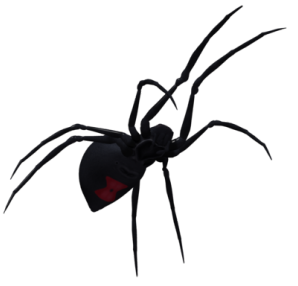Country of Origin: Brazil
Natural Environment and Behavior:
Grammostola pulchra, commonly known as the Brazilian black tarantula, is a captivating species of tarantula native to the grasslands of Brazil. Renowned for its striking beauty and docile temperament, the Grammostola pulchra has captured the hearts of arachnid enthusiasts around the world.
One of the most remarkable features of the Brazilian black tarantula is its appearance. As its name suggests, it possesses a deep, velvety black exoskeleton, which gives it an elegant and enchanting allure. The jet-black coloration extends from its body to its long, hairy legs, creating a visually striking contrast that is both captivating and mysterious.
In addition to its aesthetic appeal, the Brazilian black tarantula is also known for its calm and gentle nature. Unlike some of its more aggressive counterparts, this species is generally docile and less prone to aggression, making it a popular choice among tarantula enthusiasts, including beginners. Its relaxed temperament allows for easier handling and interaction, providing enthusiasts with a unique opportunity to observe and appreciate these fascinating creatures up close.
Grammostola pulchra is primarily a ground-dwelling tarantula, constructing elaborate burrows in which it spends much of its time. These burrows serve as a safe retreat, providing protection from predators and regulating temperature and humidity levels. The Brazilian black tarantula is well-adapted to its environment, and its burrowing behavior reflects its preference for a sheltered and secure lifestyle.
When it comes to feeding, Grammostola pulchra has a voracious appetite. In the wild, it preys upon a variety of insects, such as crickets, roaches, and beetles. In captivity, a well-balanced diet of appropriately-sized live prey can fulfill its nutritional needs. However, it is crucial to ensure that the prey items offered are suitable and provide proper nutrition to maintain the tarantula’s health.
The Brazilian black tarantula possesses urticating hairs as a defensive mechanism. These specialized hairs are located on its abdomen and can be flicked off when the tarantula feels threatened. The urticating hairs cause irritation and discomfort, acting as a deterrent to potential predators. However, Grammostola pulchra tends to rely more on its calm temperament and retreat into its burrow rather than resorting to the use of urticating hairs.
Grammostola pulchra stands as a testament to the diversity and magnificence of the arachnid world. Its deep black coloration, calm disposition, and burrowing behaviors make it a fascinating species to observe and care for. As a treasured addition to the realm of tarantulas, the Brazilian black tarantula continues to captivate the hearts and minds of arachnid enthusiasts, reminding us of the beauty and wonder that exist within the natural world.
Longevity:
Females: 40 years, males: 8 years.
Size:
Up to 18cm.
Husbandry:
Keep at 60-70% humidity and 21-28°C for temperature, use a mix of coconut fiber and peat moss.
Enclosure Size:
5-10 cm for spiderlings, 10-15 cm for juveniles, and 30*30*30 cm or more for adults.
